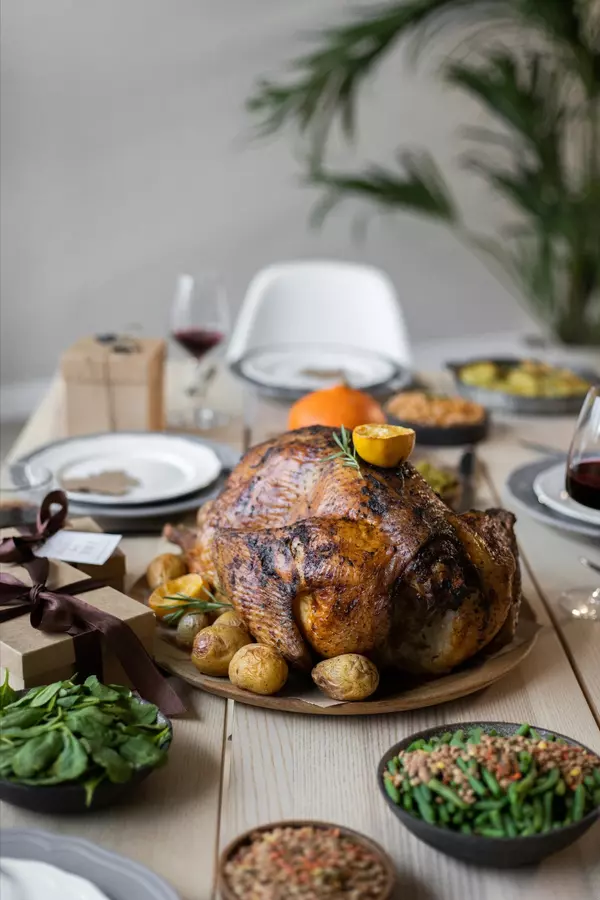
Unraveling the Art of Seamanship: A Guide to Nautical Knots
Nautical knots are more than just practical tools for sailors; they are an art form, a language of the sea that speaks to the skill and expertise of mariners throughout history. In this blog post, we embark on a journey through the intricate world of nautical knots, exploring their diverse forms, functions, and the timeless allure they bring to the maritime world. 1. Bowline Knot The King of Knots: Often hailed as the king of knots, the bowline is a versatile and secure knot used in various maritime applications. Its simplicity makes it easy to tie, and its strength makes it a reliable choice for creating a fixed loop at the end of a line. 2. Clove Hitch The Quick and Secure Hitch: Ideal for securing a line to a post or a spar, the clove hitch is a quick and simple knot. Its ability to grip well under tension makes it a go-to choice for securing fenders, attaching sails, or creating temporary lashings. 3. Reef Knot (Square Knot) Binding Two Ends Together: The reef knot, also known as the square knot, is a fundamental knot for joining two lines of equal diameter. It's commonly used in reefing sails, bundling items, or securing bandages. However, caution is needed, as it can slip if not properly secured. 4. Figure Eight Knot Stopper Knot and More: The figure-eight knot is a stopper knot that prevents a rope from slipping through a fitting. It's also used as a loop to prevent a line from running out of a block. Its simplicity and reliability make it a staple in the sailor's repertoire. 5. Clove Hitch with Two Half Hitches Securing Lines to Poles: Combining the stability of the clove hitch with the added security of two half hitches, this knot is perfect for securing lines to poles or posts. Sailors often use it for docking procedures and securing lines to cleats. 6. Sheet Bend Joining Different Diameter Lines: The sheet bend is a versatile knot used for joining lines of different diameters. Its ability to hold securely under tension makes it valuable for a variety of applications, such as extending the length of a line or connecting ropes of different sizes. 7. Monkey's Fist The Decorative and Weighted Knot: Known for its decorative and weighted properties, the monkey's fist is often used as a heaving line to toss between a boat and a dock. Its intricate design makes it an aesthetically pleasing knot that also serves a functional purpose. Nautical knots are a testament to the ancient art of seamanship, a skill that has been passed down through generations of sailors. Each knot tells a story of practicality, craftsmanship, and the deep connection between mariners and the sea. As you delve into the world of nautical knots, you not only unlock essential skills for maritime activities but also connect with a rich maritime heritage that has navigated the oceans for centuries. So, next time you tie a bowline or secure a clove hitch, remember that you're engaging in an age-old tradition that links you to sailors across time and tides.

Nautical Delights: A Guide to Charleston's Waterways and Safe Boating
Charleston, South Carolina, is a city surrounded by a network of waterways that offer boating enthusiasts a playground of exploration. From tranquil rivers to tidal creeks, the area is rich in diverse water bodies. In this blog post, we'll embark on a journey to discover the different waterways in and around Charleston and highlight which ones are safe for a delightful boating experience. Charleston Harbor: The crown jewel of Charleston's waterways, the Charleston Harbor, is a bustling maritime hub with a mix of commercial and recreational vessels. Boaters can enjoy breathtaking views of the city skyline, historic forts, and the iconic Ravenel Bridge. However, due to its active shipping traffic, it's crucial for boaters to exercise caution and adhere to navigation rules. Ashley River: Flowing through the heart of Charleston, the Ashley River is a serene waterway lined with historic plantations and scenic landscapes. Boaters can cruise past Middleton Place and Magnolia Plantation, experiencing the Lowcountry's natural beauty. The Ashley River is generally safe for boating, but it's essential to be aware of tidal currents. Cooper River: The Cooper River, flowing alongside Charleston, provides a picturesque route with views of Waterfront Park and the USS Yorktown. Boaters can navigate this river for a relaxing outing, but attention should be paid to currents, especially near the Ravenel Bridge. Boating in the Cooper River offers a mix of city sights and peaceful waters. Wando River: North of Charleston, the Wando River is a favorite among boaters seeking a quieter experience. The river winds through scenic marshes and offers opportunities for fishing and birdwatching. The Wando River is generally safe for boating, and its meandering path allows for a leisurely exploration of the surrounding nature. Intracoastal Waterway (ICW): The ICW stretches along the Atlantic coast, providing boaters with an extensive water route that passes through the Charleston area. While the ICW itself is safe, it's essential to be mindful of changing conditions, such as shifting sandbars and tidal changes. Proper navigation charts and updated information are crucial for a smooth journey. Stono River: Meandering through Johns Island and James Island, the Stono River is a serene waterway surrounded by lush landscapes. Boaters can enjoy a peaceful escape along this river, with opportunities for fishing and wildlife observation. The Stono River is generally safe, but it's advisable to check for local regulations and tidal conditions. Folly River: Nestled near Folly Beach, the Folly River offers a laid-back boating experience with scenic views and access to the Atlantic Ocean. Boaters can explore the marshes and enjoy the bohemian atmosphere of Folly Beach. While the Folly River is generally safe, boaters should be mindful of shallow areas and tidal currents. Safety Tips for Boating in Charleston's Waterways: Check weather conditions and tidal predictions before heading out. Be aware of local regulations and navigational markers. Use updated navigation charts and GPS devices. Maintain a safe speed, especially in crowded or narrow waterways. Ensure that safety equipment, including life jackets, is on board. Charleston's waterways offer a maritime adventure filled with history, natural beauty, and the charm of the Lowcountry. While exploring these diverse water bodies, boaters can enjoy a mix of cityscapes, historic sites, and tranquil marshes. By prioritizing safety and being mindful of local conditions, boaters can navigate Charleston's waterways with confidence, creating memorable experiences on the serene Southern waters.
Categories
- All Blogs (78)
- 1031 exchange (2)
- 2024 market (1)
- 55 and over community (1)
- activities (2)
- african american (2)
- ai (1)
- ai design (1)
- angel oak tree (2)
- antebellum (2)
- assisted living (1)
- authors (1)
- blue bottle tree (1)
- boating (2)
- books about the lowcountry (1)
- boone hall (2)
- bulls island (2)
- buyer (8)
- buying (21)
- buying a home (20)
- buying in mount pleasant (6)
- buying in the lowcountry (6)
- buying on the water (4)
- cad (1)
- canoeing (1)
- charleston (30)
- charleston county (15)
- charleston tax (2)
- chart a boat (1)
- childhood home (1)
- climate change (1)
- coastal design (1)
- coastal erosion (1)
- coastal kitchen (1)
- coffee (1)
- coffee shops in charleston (1)
- condos (1)
- culinary (1)
- cypress gardens (1)
- design (2)
- dewees island (1)
- dock (2)
- docklife (1)
- downtown charleston (1)
- drayton hall (2)
- elderly couple (1)
- estate (1)
- farmers markets (1)
- flowers (1)
- folklore (1)
- folly beach (3)
- folly river (1)
- food (1)
- forestland (1)
- Fourth of July in Charleston (1)
- garden (1)
- gardening (1)
- georgian (1)
- greater charleston (5)
- greek revival (1)
- green thumb (1)
- greenhouse (1)
- gullah (1)
- haint blue (1)
- heirs' property (1)
- high water (1)
- historic architecture (1)
- historical homes (2)
- history (1)
- hoa fees (1)
- home buying (8)
- home repair (3)
- home styles (1)
- homeowner (6)
- homeownership (6)
- homes for sale in charleston (1)
- homes for sale in james island (1)
- homes for sale in mount pleasant (1)
- homes for sale in west ashley (1)
- homestead (1)
- homestead exemption (1)
- hospitality (1)
- hostess (1)
- hosting (1)
- houses (1)
- hurricane (1)
- insulation (1)
- interior decor (3)
- interior design (2)
- interiordesign (1)
- intracoastal (3)
- investing (1)
- investment (2)
- investment property (1)
- isle of palms (3)
- italiante (1)
- james island county park (1)
- john's island (1)
- kayaking (1)
- kitchen design (2)
- kitchen layout (1)
- land in common (1)
- lighthouse (1)
- lighthouses (1)
- lowcountry (10)
- luxury (1)
- luxury real estate (1)
- magnolia plantation (2)
- marketing (2)
- marketingyourhome (1)
- marsh (1)
- mold (1)
- mold in homes (1)
- mold in the lowcountry (1)
- mold remediation (1)
- mount pleasant (5)
- moving (3)
- moving to charleston (5)
- movingoutofstate (1)
- movingtocharleston (2)
- nar (1)
- nar lawsuit (1)
- nautical (1)
- oak trees (1)
- paddleboarding (1)
- palm trees (1)
- palmetto (1)
- palmetto trees (1)
- plantation (1)
- plantations (2)
- property (1)
- property preservation (1)
- raised homes (1)
- real estate (7)
- realestate (2)
- realestatemarketing (1)
- realty (6)
- realty101 (1)
- regime fees (1)
- relocation (1)
- relocationcosts (1)
- remediation (1)
- rental (1)
- rental properties (1)
- restaurant week (1)
- restaurants (1)
- retirement (1)
- sailing (1)
- seller (3)
- selling (10)
- selling a home (3)
- selling in charleston (4)
- selling in mount pleasant (2)
- selling on the water (1)
- selling your home (5)
- sellingyourhome (1)
- senior citizen (1)
- senior citizens (1)
- senior living (1)
- shark tooth (1)
- shem creek (2)
- south (1)
- south carolina (4)
- south of broad (1)
- southern architecture (1)
- southern folklore (1)
- southern hospitality (1)
- southern lady (1)
- southern living (2)
- spanish moss (1)
- spray foam (1)
- spray foam insulation (1)
- sullivans island (2)
- sweetgrass (1)
- sweetgrass baskets (1)
- taxes (1)
- tidal (1)
- title (2)
- title insurance (1)
- tour (1)
- tour times (1)
- townhomes (1)
- useanagent (1)
- victorian (1)
- wando river (1)
- water views (1)
- waterways (2)
- whyagentsmatter (1)
- winter (1)
- winter maintenance (1)
- winter ready (1)
- winterize (1)
Recent Posts











